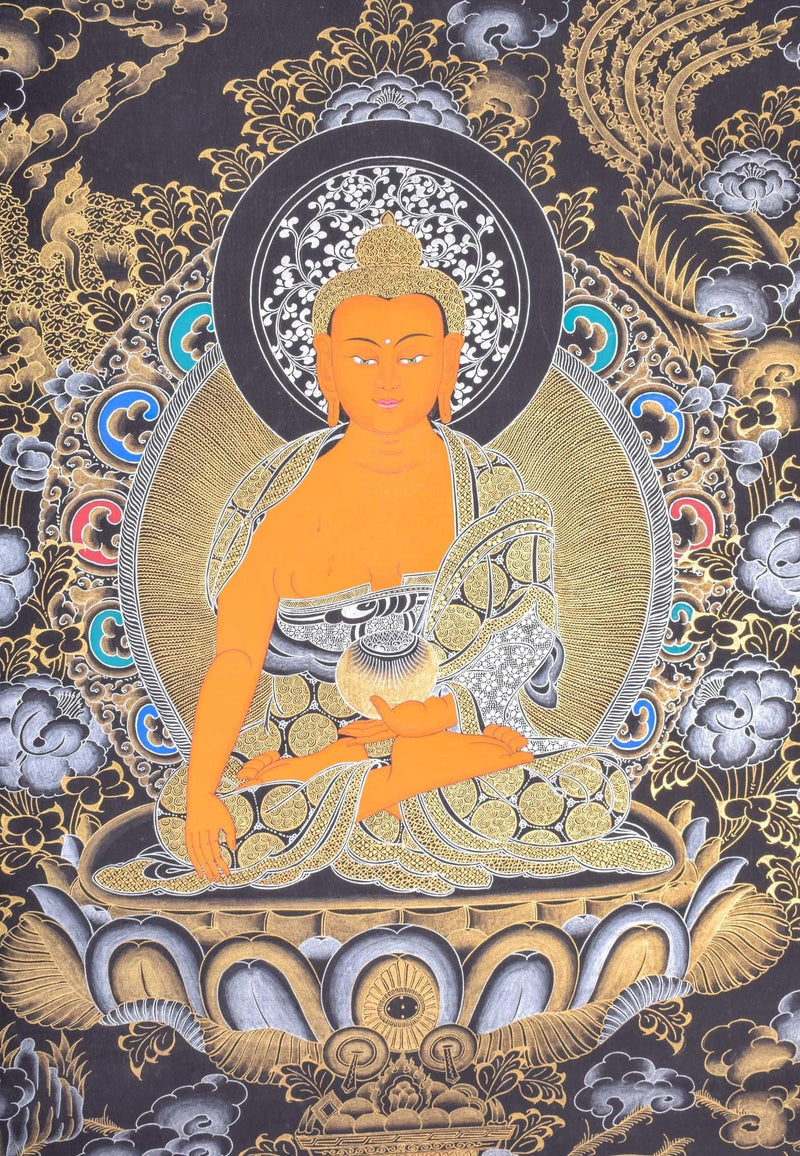The Trikaya is a fundamental doctrine within Mahayana and Vajrayana Buddhism that delineates the multidimensional nature of a Buddha's existence. This concept posits that a Buddha has three distinct bodies or aspects, each representing a different facet of enlightenment.
Trikaya (Sanskrit: three bodies), in Mahayana Buddhism, is the concept of the three bodies, or modes of being, of the Buddha:
1) Dharmakaya (body of essence)
2) Sambhogakaya (body of enjoyment)
3) Nirmanakaya (body of transformation)
Why is Trikaya important? In essence, the Trikaya doctrine offers a profound framework for understanding the diverse dimensions of Buddhahood. It demonstrates how a Buddha can simultaneously exist in multiple realms and embody a spectrum of qualities, guiding practitioners towards liberation and awakening through various aspects of their being.
What is the Trikaya symbol?
The Gankyil is a symbol and ritual tool in Tibetan Buddhism. In the Bon and Nyingma Dzogchen lineages, the Gankyil is the principal symbol and teaching tool; it is symbolic of primordial energy and represents the central unity and indivisibility of all the teaching, philosophical, and doctrinal trinities in Dzogchen. It is an attribute of the snow lion.
What is the Dharmakaya in Buddhism?
A term, Dharmakaya, was coined to describe a more metaphorical body.a body or collection of all the Buddha's good qualities or dharmas, such as his wisdom, his compassion, his fortitude, and his patience.
1) Dharmakaya
The first body is the Dharmakaya, often referred to as the "Dharma body," or ultimate reality. This embodies the essence of enlightenment itself, encompassing concepts like emptiness, Buddha nature, and pure existence beyond material and spiritual forms.
The Dharmakaya is one of the three bodies (Trikāya) of a Buddha in Mahāyāna Buddhism. The Dharmakāya constitutes the unmanifested, "inconceivable" (acintya) aspect of a buddha out of which buddhas arise and to which they return after their dissolution.
The Trikaya doctrine (Sanskrit, literally "three bodies" or "three personalities") is a Buddhist teaching both on the nature of reality and the appearances of a Buddha.
In Vajrayana Buddhism,the term chos sku has been defined as "Buddha-body of reality," which is a rendering of the Tibetan chos-sku and the Sanskrit dharmakāya as:
The ultimate nature or essence of the enlightened mind is uncreated, free from the limits of conceptual elaboration, empty of inherent existence, naturally radiant, beyond duality, and spacious like the sky. The intermediate state of the time of death is considered to be an optimum time for the realisation of the Buddha-body of reality.
The Dalai Lama defines the dharmakaya as "the realm of the dharmakaya—the space of emptiness—where all phenomena, pure and impure, are dissolved. This is the explanation taught by the Sutras and Tantras." However, he also states that it is distinct from the Hindu concept of Brahman because Buddhism adheres to the doctrine of emptiness (sunyata).
What are the two types of dharmakaya?
Dharmakaya can be divided into the jnanakaya, or wisdom body (the blissful omniscient mind of a Buddha), and svabhavikakaya, or nature body (the emptiness of the Buddha's mind).
What are the qualities of Dharmakaya?
Tulku Thondup states that Dharmakaya must possess three great qualities:
- Great purity
- Great realisation
- Great mind
What is the manifestation of Dharmakaya?
It is also the spiritual body, or "truth body," of all Buddhas. It is also important to understand that the dharmakaya is always present and pervades everywhere. It cannot manifest as itself, yet all beings and phenomena manifest from it. It is in many ways synonymous with Buddha Nature and with sunyata, or emptiness.
What is the difference between Dharmakaya and Dharmadhatu?
Dharmadhatu is the cosmos. It comprises all phenomena. And sometimes it is considered to be a "body." Dharmakaya means the body of the Dharma.

Donations for our Buddhist research and development
Do you earnestly cherish our devoted work? Assuming this is the case, we are delighted that you are finding our blog useful and valuable. Would you consider making a donation for our Buddhist research and development?
We need your help to secure the future of scholarly interaction with Buddhism. Since our very first publication of Dharma works and activities in 2008, we have been effortlessly providing free distribution of Dharma posts and articles throughout the previous 14 years. We have exceptionally constrained support and do not receive subsidies or funding from people in general.
Please help us develop our Dharma activities that will not only benefit you but all Dharma readers on the planet. Please consider showing your support. Your generosity will certainly help us enhance our work and accomplish more for a better and brighter future.
Thank you for reading. May you find peace and great bliss. With your support, it helps to spread the Buddha’s precious teachings and turn the Dharma wheels in the world.
Aspiration For Bodhichitta
For those in whom the precious Bodhichitta has not arisen
May it arise and not decrease.
But increase further and further.
Dedication of Merit
By this merit, may we then obtain omniscience then.
Having defeated the enemies wrongdoings
May we liberate migratory from the ocean of existence.
With its stormy waves of birth, old age, sickness, and death.
*Note
I do not own or infringe any copyright on the picture(s).
Picture(s) courtesy and credit to the rightful distributors and/or studios
The picture(s) are intended for editorial use only.























